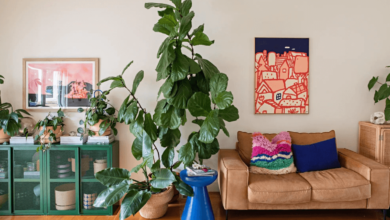Key Considerations for Using a Paint Calculator on Exterior Spaces

Painting the exterior of your home or any outdoor structure is a significant investment in terms of both time and money. Whether you’re refreshing a tired fence, sprucing up the exterior of your house, or painting a garden shed, knowing how much paint you’ll need is crucial.
One of the best methods for estimating paint quantity is a paint calculator. There are some variables to consider for exterior surfaces in an effort to create realistic estimates. The article that follows is the most critical elements to account for when using a paint calculator for exterior surfaces to maintain as realistic estimates as one can.
- Get the Area Measurement Right
The first that you should do with any exterior paint calculator is to obtain the right measurements of the area that you will be painting. This is doing the measurement of walls, trim, and the other surfaces that you will be painting outdoors. You will have to measure the height and width of each wall as accurately as possible, taking into account any area you are not painting, like windows and doors.
Walls: Measure all walls individually. If your home has a weird roof or sloping roofline, split the measurements into sections and then add them up individually.
Trim and Details: Don’t forget to measure trim, gutters, and minor details you’ll be painting. These details will possibly need different types of paint or finishes, so you’ll need to calculate them individually.
- Subtract Windows and Doors
Doors and windows take up so much space on walls in exterior painting, and you can save yourself paint by not using paint on them. When you are calculating with a paint calculator, you subtract the door and window space from your wall space before you input your measurements.
How to: Measure the height and width of all windows and doors and multiply the height by width for each area. Then subtract the sum of all doors and windows’ areas from the sum of the walls’ areas.
Optional Features: If you are using a paint calculator with window and door input dimensions, use this option if it is available.
See also: How to Use AI Video Makers for Social Media Content
- Add Surface Texture and Type
The most important of the paint coverage ratios is usually the surface texture to be painted. The exterior surface will always be more textured than the interior walls and has the potential to affect the way paint absorbs.
Smooth vs. Rough Surfaces: Smooth surfaces such as primed wood or siding will need less paint than rough or porous surfaces such as brick, stucco, or concrete. Rough surfaces soak up more paint, so you’ll need to factor this in when using a paint calculator.
Calculator Adjustments: Some paint calculators ask for the type of surface you’re painting, allowing them to adjust the estimate based on texture. Be sure to specify the surface type (e.g., stucco, wood, concrete) for a more accurate calculation.
- Consider the Paint’s Coverage Rate
Where you locate will play a large part in how much you will need. Paint coverage will usually be rated as square feet per gallon (or square meters per liter) and will usually depend on the paint type and its formulation.
Check the Paint Can: On the paint can, there will be an estimate of how much surface area a gallon covers. It will typically be for smooth, primed surfaces, so keep an eye on what the texture of your surface is, as noted above.
Paint Quality: Higher-end paints have better coverage rates, and you will end up using less. With lower-cost paints, the reverse will typically be the case. You’ll need to apply more layers. If using a high-end paint, make sure the paint calculator considers the product’s coverage rate.
Primer: When you are painting with a primer, this will have an impact on coverage as well. Certain exterior paint calculator enables you to input primer separately, but if not, you will need to do your calculations for this.




